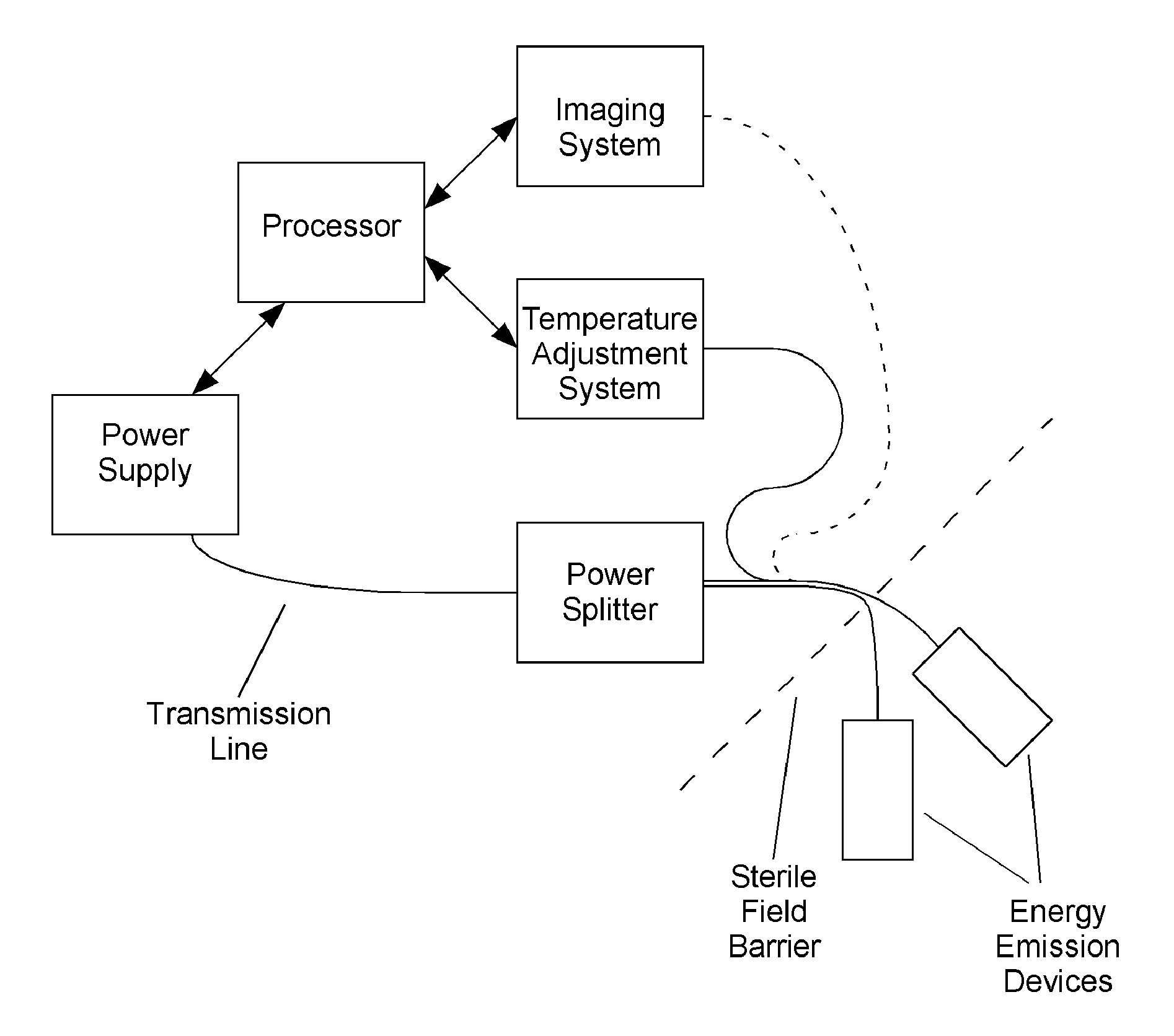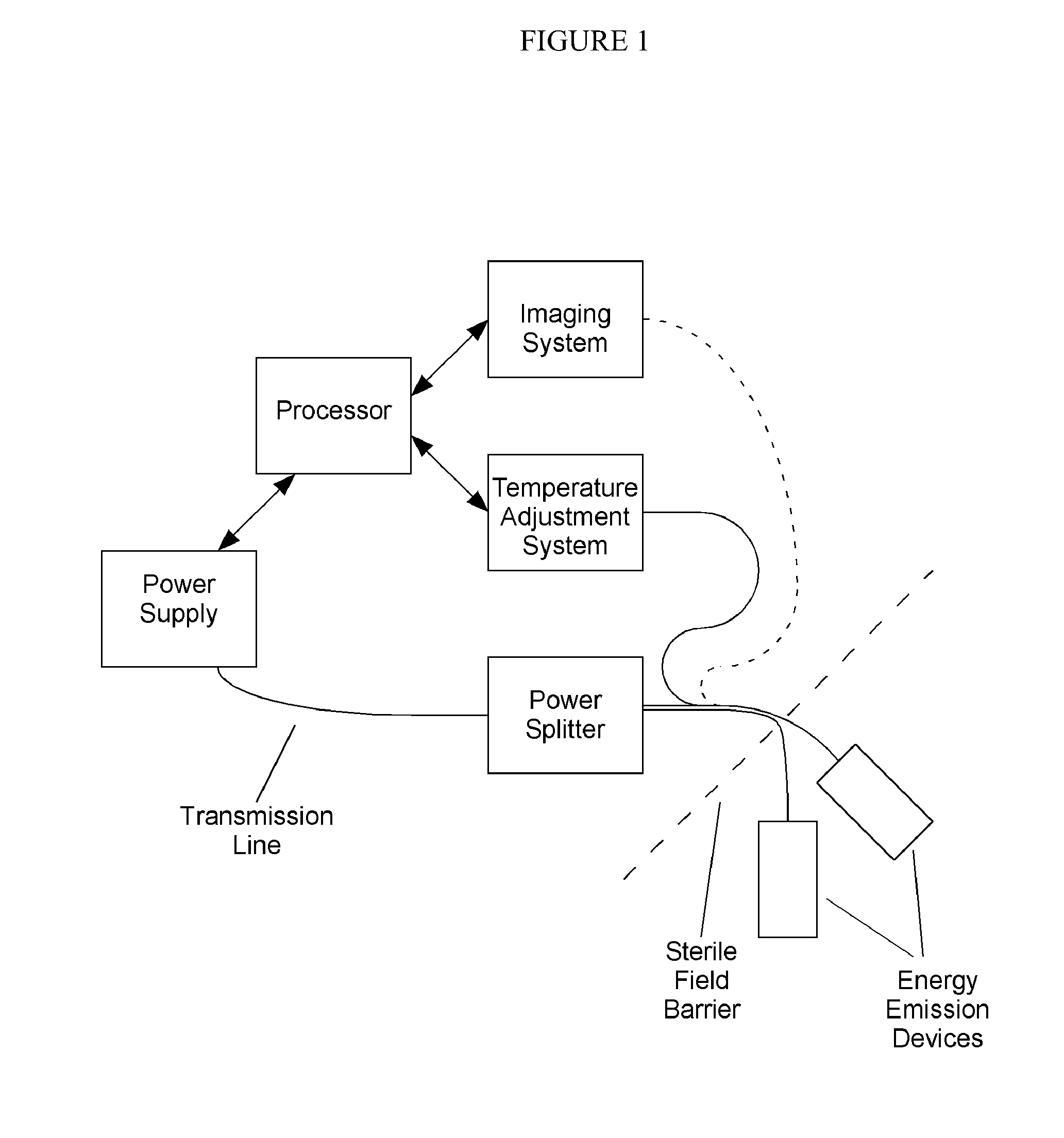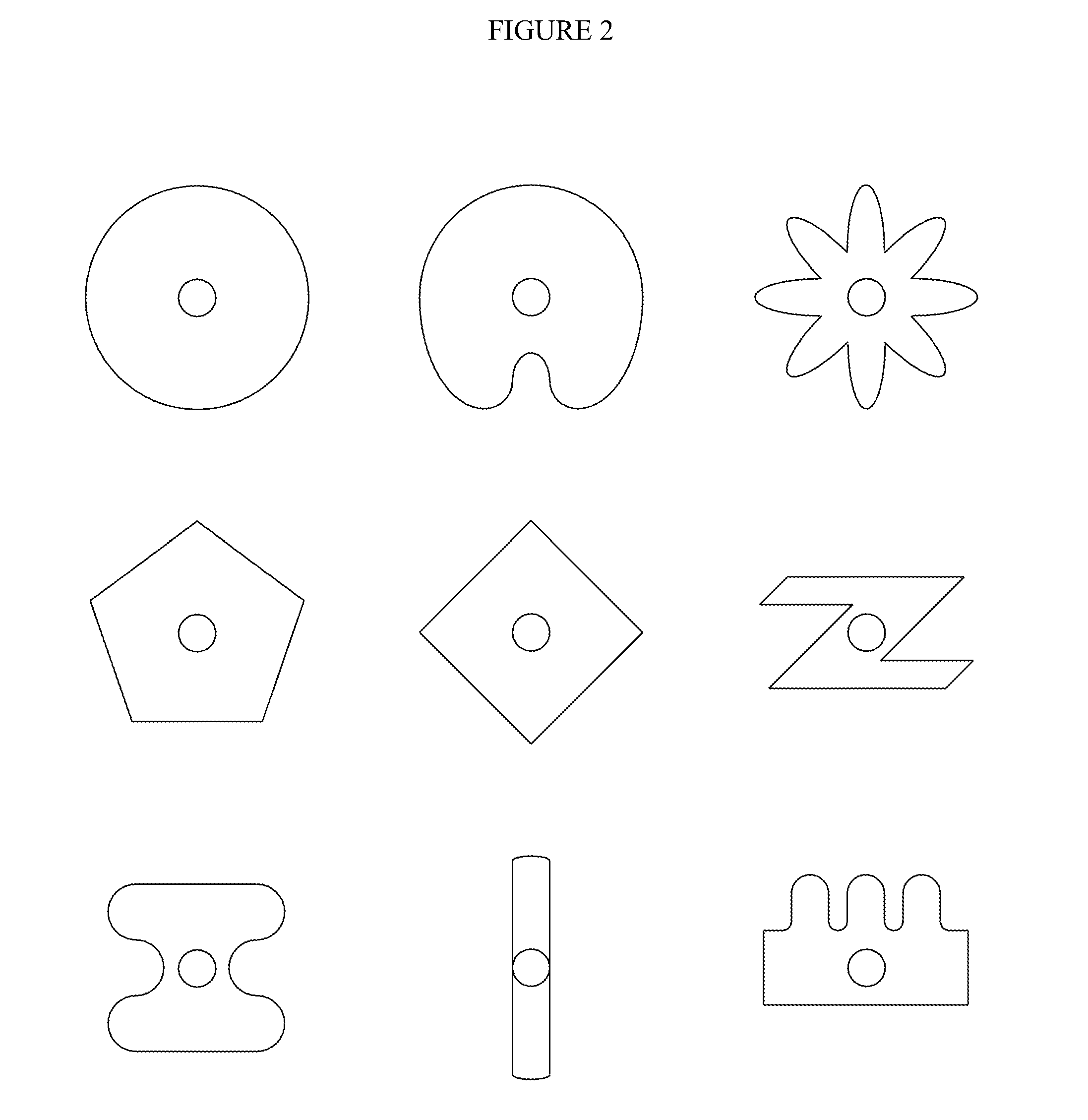Energy delivery systems and uses thereof
- Summary
- Abstract
- Description
- Claims
- Application Information
AI Technical Summary
Benefits of technology
Problems solved by technology
Method used
Image
Examples
example i
[0209]This example demonstrates the avoidance of undesired tissue heating through use of an energy delivery device of the present invention circulating coolant through coolant channels. The ablation needle shaft for all experiments was 20.5 cm. There was minimal cooling of the handle assembly indicating that handle-cooling effects were well-isolated. Temperature probes 1, 2 and 3 were located at 4, 8 and 12 cm proximal to the tip of the stainless needle (see FIG. 9). Temperature measurements were taken for 35% power measurement following insertion into a pig liver and 45% power measurement following insertion into a pig liver. For the 35% power measurement, Probe 4 was on the handle itself. For the 45% power measurements, Probe 4 was located at the needle-skin interface, approximately 16 cm back from the stainless needle tip.
[0210]As shown in FIG. 10, treatment at 35% power for 10 minutes with anonymously high (6.5%) reflected power demonstrated maintenance of the device at a non-ti...
example ii
[0212]This example demonstrates generator calibration. Generator calibration was done by Cober-Muegge at the factory and was set to be most accurate for powers greater than 150 W. The magnetron behaved much like a diode: increasing cathode voltage did not increase vacuum current (proportional to output power) until a critical threshold was reached, at which point vacuum current increased rapidly with voltage. Control of the magnetron source relied on accurate control of the cathode voltage near that critical point. As such, the generator was not specified for powers from 0-10% and correlation between the output power and theoretical power percentage input was poor below 15%.
[0213]To test the generator calibration, the power control dial was changed from 0.25% in 1% increments (corresponding to theoretical output powers of 0-75 W in 3 W increments) and the generator's output power display was recorded and power output measured. The measured power output was adjusted for the measured ...
example iii
[0215]This example describes the setup and testing of an antenna during manufacturing. This provides a method for setup and tested in a manufacturing environment. The method employs a liquid, tissue-equivalent phantom rather than tissue.
[0216]From the numerical and experimental measurements already made on the antenna, it was known that changes in L2 of ˜1 mm will increase the reflected power from 2 is reasonable. Likewise, a tolerance of 0.5 mm on the length L1 is used, even though the total reflection coefficient depends less on L1 than L2.
[0217]Testing of the antenna tuning for quality control purposes can be achieved using a liquid solution designed to mimic the dielectric properties of liver, lung or kidney (see, e.g., Guy A W (1971) IEEE Trans. Microw. Theory Tech. 19:189-217; herein incorporated by reference in its entirety). The antenna is immersed in the phantom and the reflection coefficient recorded using a 1-port measurement device or full vector network analyzer (VNA). ...
PUM
 Login to View More
Login to View More Abstract
Description
Claims
Application Information
 Login to View More
Login to View More - R&D
- Intellectual Property
- Life Sciences
- Materials
- Tech Scout
- Unparalleled Data Quality
- Higher Quality Content
- 60% Fewer Hallucinations
Browse by: Latest US Patents, China's latest patents, Technical Efficacy Thesaurus, Application Domain, Technology Topic, Popular Technical Reports.
© 2025 PatSnap. All rights reserved.Legal|Privacy policy|Modern Slavery Act Transparency Statement|Sitemap|About US| Contact US: help@patsnap.com



